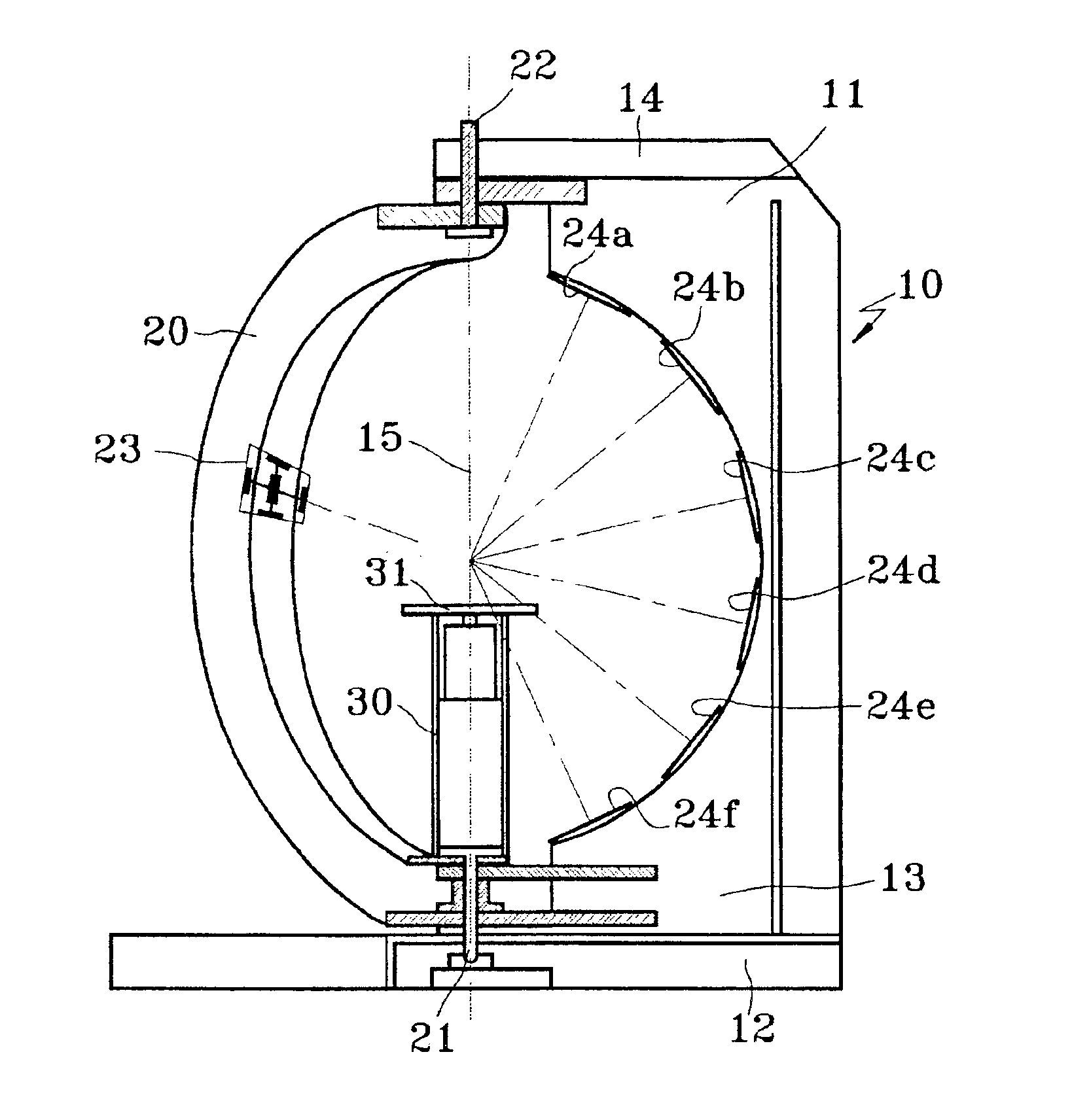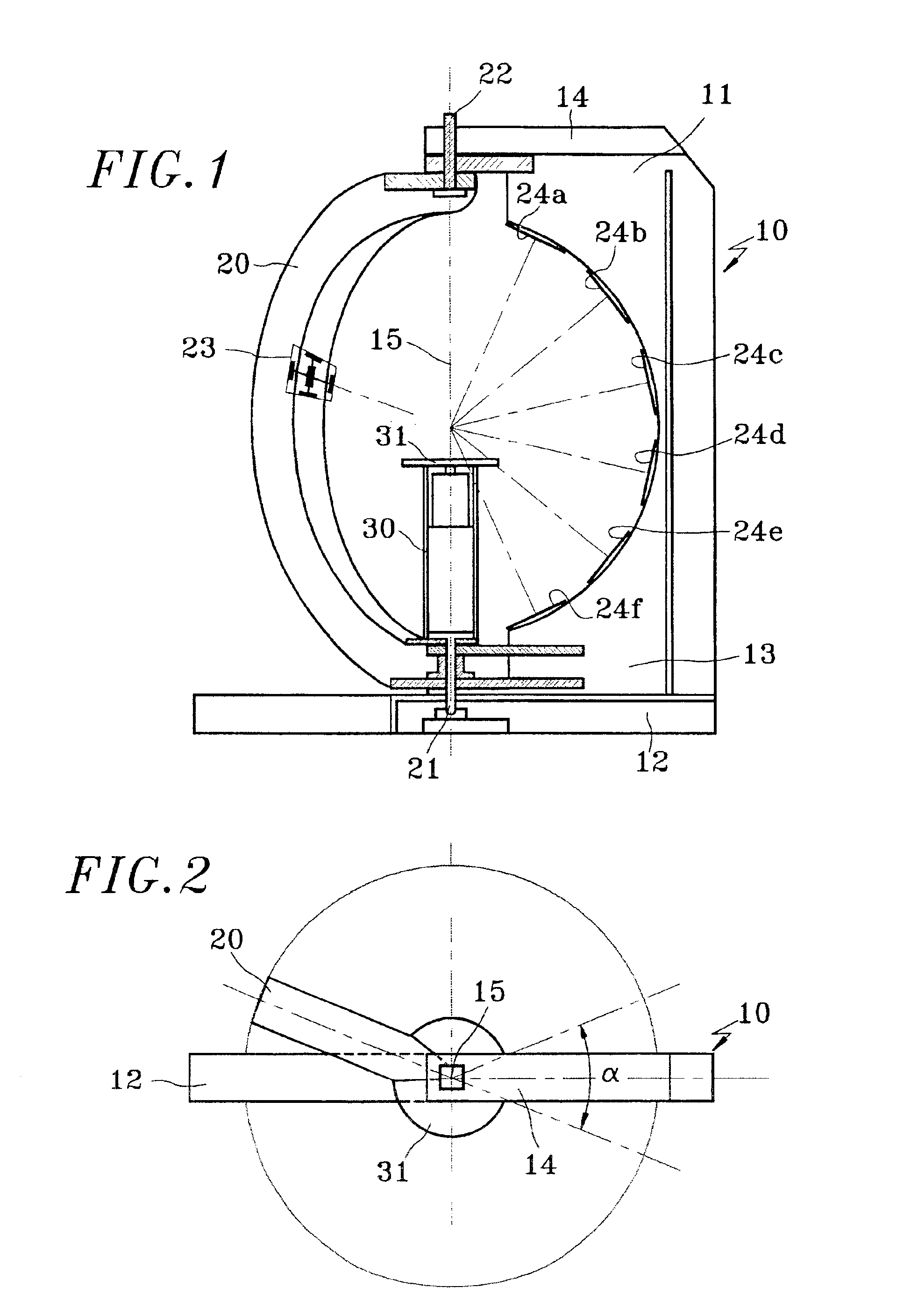Method and device for near-field measuring of non-controlled radiation
a technology of non-controlled radiation and near-field measurement, which is applied in the direction of resistance/reactance/impedence, instruments, transmission monitoring, etc., can solve the problems of difficult measurement, impossible to provide, and extremely difficult to measure these different signals
- Summary
- Abstract
- Description
- Claims
- Application Information
AI Technical Summary
Benefits of technology
Problems solved by technology
Method used
Image
Examples
Embodiment Construction
The device is constituted of a fixed support frame 10 comprising an arch 11 mounted on a base 12. Between the lower 13 and upper 14 branches of the arch a second support frame 20 is installed which is mounted to pivot around pivots 21, 22. This pivoting support frame 20 forms a curved arm usually integral with a turning plate 30 adjustable in height and comprising a reception platform 31 for the apparatus to be analyzed (the AUT, not shown here). The arm 20 and the plate 30 can nonetheless be separated from each other by disengagement.
As can be seen in the view from above (FIG. 2), the mobile arm 20 is able to follow a course of practically 360° around the axis of rotation 15. However, in an angular zone next to the arch 11 of the fixed frame 10, the arm 20 comes up against the stop of the arch 11. At this moment, it is thus possible to allow the plate 30 to finish a complete turn, up to 360°, by disengaging it from the mobile arm 20.
The mobile arm 20 is equipped with a sensor 23, c...
PUM
 Login to View More
Login to View More Abstract
Description
Claims
Application Information
 Login to View More
Login to View More - R&D
- Intellectual Property
- Life Sciences
- Materials
- Tech Scout
- Unparalleled Data Quality
- Higher Quality Content
- 60% Fewer Hallucinations
Browse by: Latest US Patents, China's latest patents, Technical Efficacy Thesaurus, Application Domain, Technology Topic, Popular Technical Reports.
© 2025 PatSnap. All rights reserved.Legal|Privacy policy|Modern Slavery Act Transparency Statement|Sitemap|About US| Contact US: help@patsnap.com



